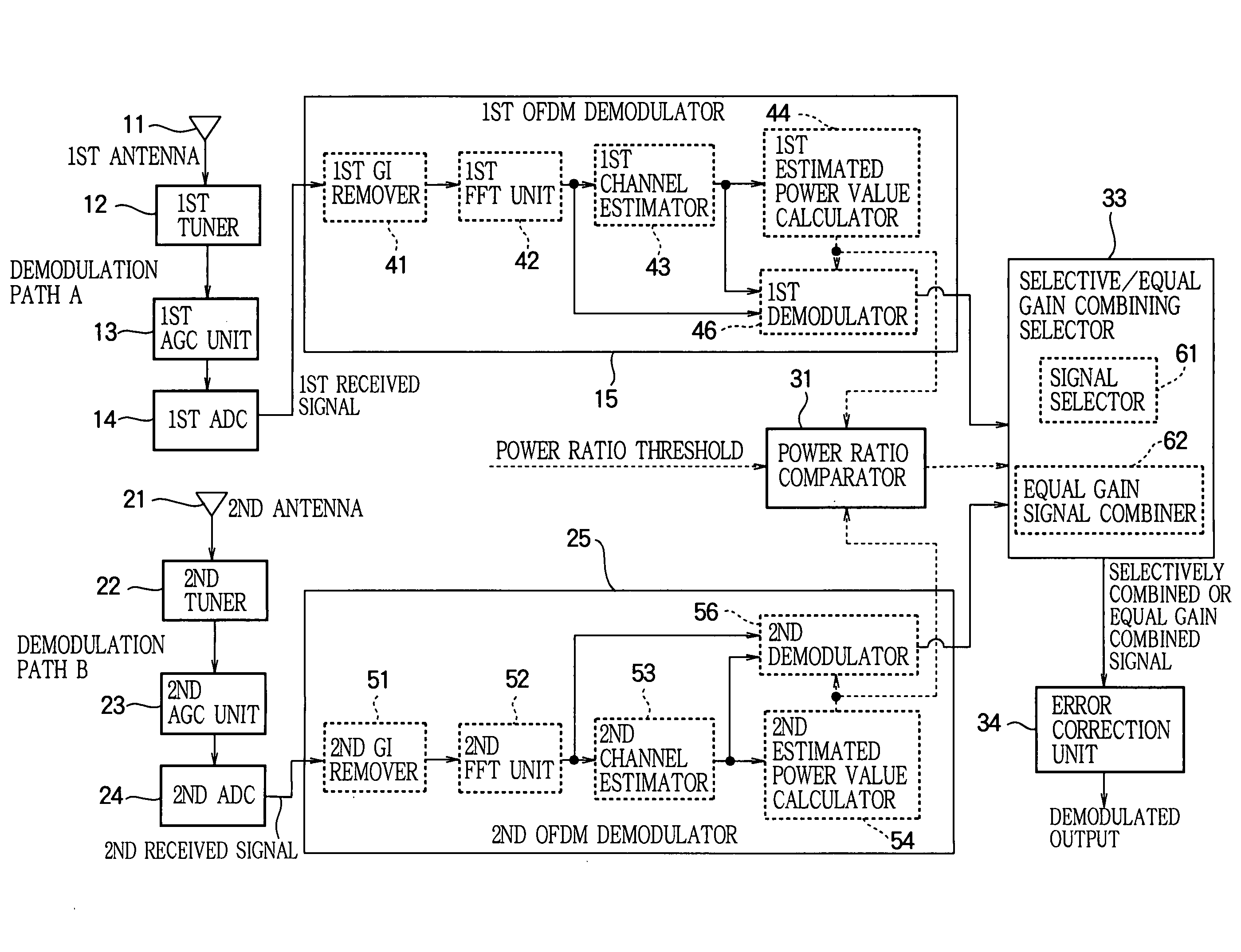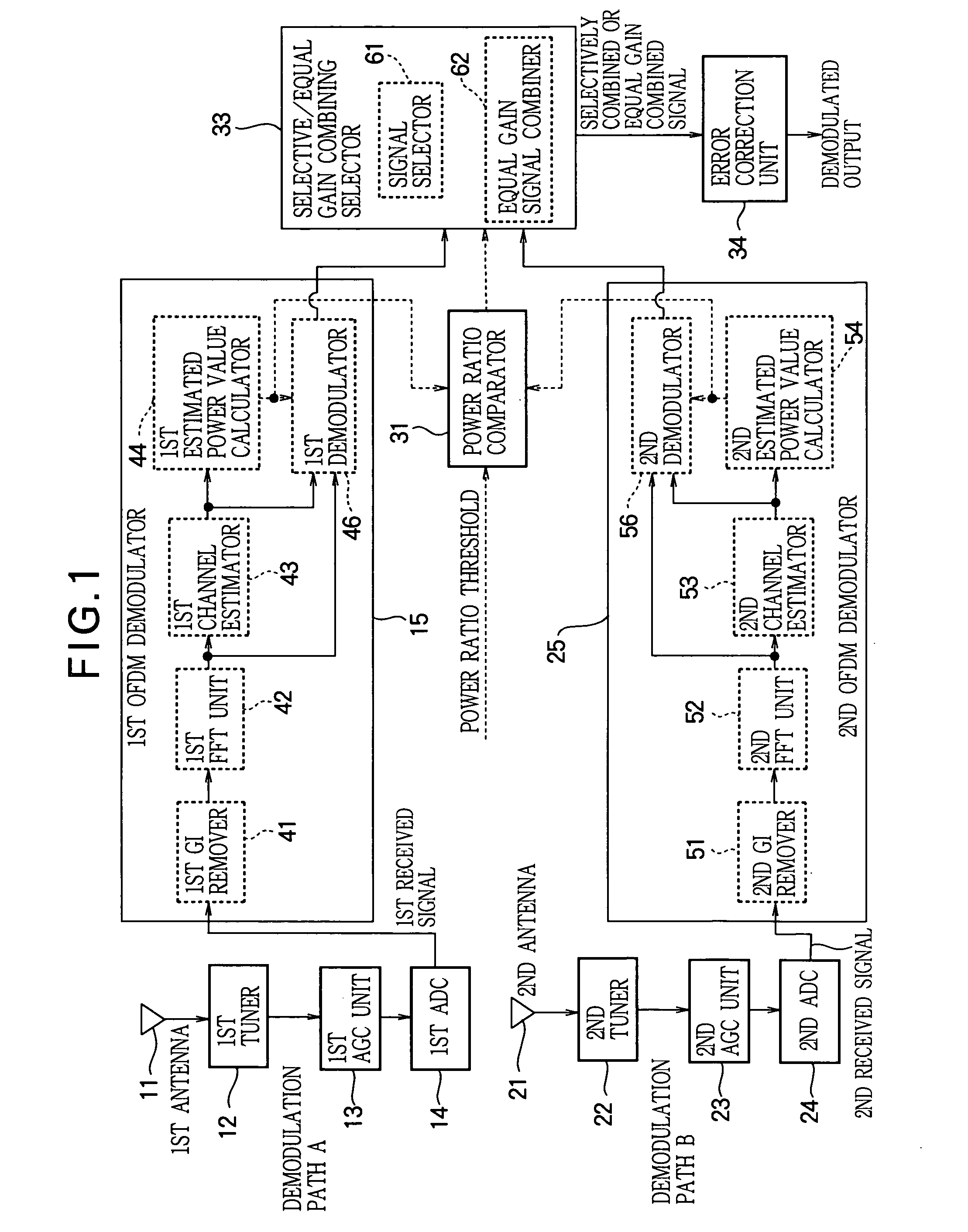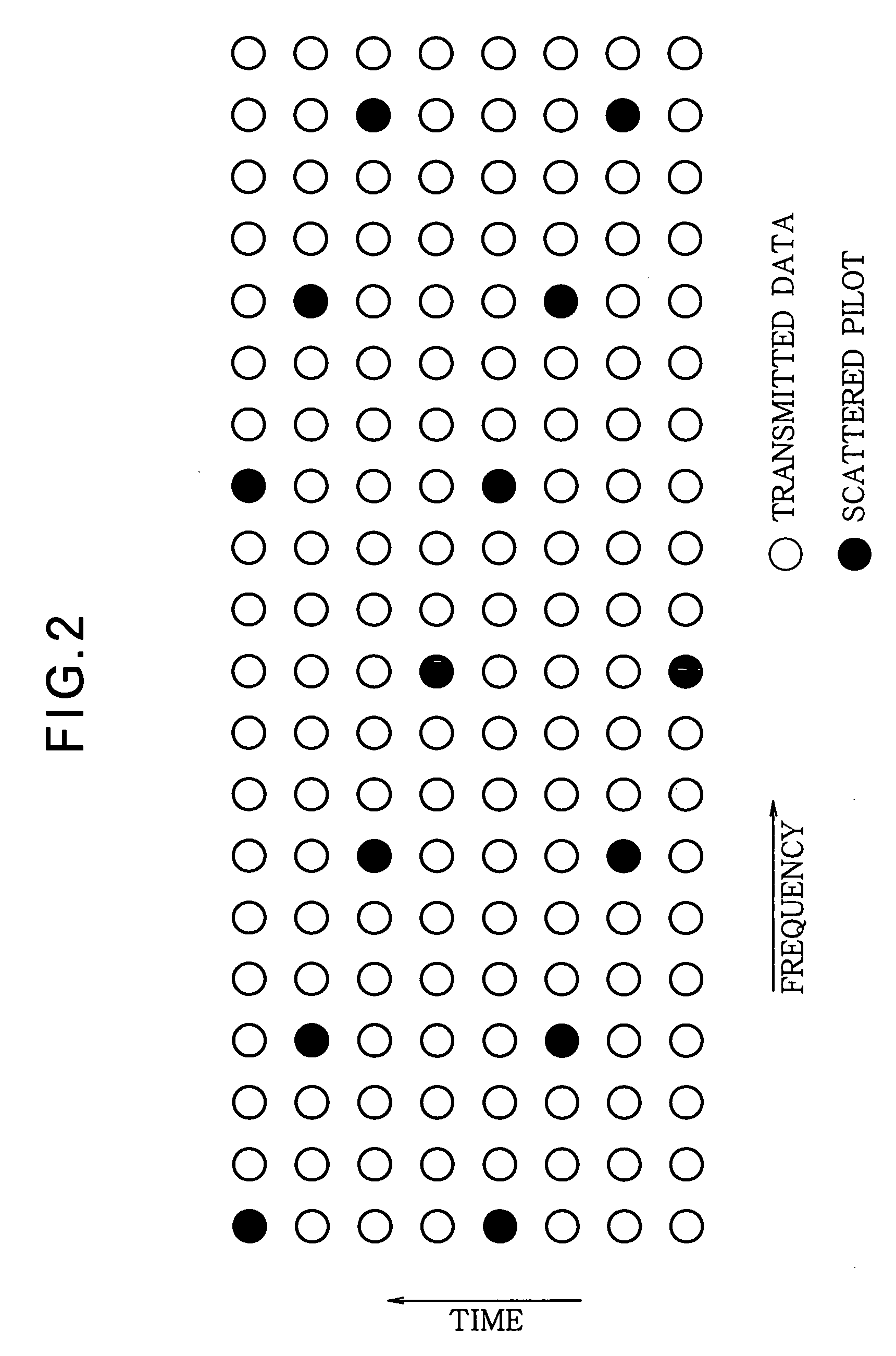Diversity reception device and diversity reception method
a technology of diversity and reception device, applied in the field of diversity receiver, can solve the problems of difficult to improve the reception performance of diversity, the reception cannot be improved over the maximum ratio combining diversity, and the receiver cannot obtain better receiving performance, etc., to achieve the effect of large diversity effect, improved receiving performance, and large diversity
- Summary
- Abstract
- Description
- Claims
- Application Information
AI Technical Summary
Benefits of technology
Problems solved by technology
Method used
Image
Examples
first embodiment
[0036]FIG. 1 is a block diagram illustrating the diversity receiver in the first embodiment.
[0037]As OFDM signal demodulation paths, the diversity receiver has two demodulation paths: demodulation path A and demodulation path B. Demodulation path A has a first antenna 11, a first tuner 12, a first AGC (Automatic Gain Control) unit 13, a first ADC (analog-to-digital converter) 14, and a first OFDM demodulator 15. Demodulation path B has a second antenna 21, a second tuner 22, a second AGC unit 23, a second ADC 24, and a second OFDM demodulator 25.
[0038]In the diversity receiver illustrated in FIG. 1, the first antenna 11 and second antenna 21 receive wireless signals that have been modulated for transmission. The first tuner 12 and second tuner 22 convert the frequency of the received wireless signals to a predetermined frequency band.
[0039]The first AGC unit 13 and second AGC unit 23 adjust the gain levels of the frequency-converted analog signals. The gain level adjustment performe...
second embodiment
[0080]The first embodiment provides a structure in which adaptive combining diversity is carried out using power estimates Pes—A, Pes—B output from the estimated power value calculators 44, 54. In the second embodiment, the power of the subcarrier components is calculated from the signal output after the Fourier transform, and adaptive combining diversity is carried out using the calculated result. In the description below, subcarrier component power is also referred to as subcarrier power, and the value of the subcarrier power is also referred to as a subcarrier power value.
[0081]FIG. 5 is a block diagram showing a diversity receiver in the second embodiment.
[0082]The structure of the diversity receiver in FIG. 5 is the same as shown in FIG. 1 in the first embodiment, except for the first OFDM demodulator 15a, second OFDM demodulator 25a, power ratio comparator 31a, first subcarrier power calculator 45, and second subcarrier power calculator 55, and except that there are no output ...
third embodiment
[0092]The diversity receivers in the first and second embodiments are structured so that estimated power or subcarrier power is determined from frequency domain signals output from the FFT units 42 and 52, based on which adaptive combining diversity is carried out. In the third embodiment, the power levels of the signals input through the antennas 11, 21 are determined and adaptive combining diversity is carried out by using these power levels, as described below.
[0093]FIG. 6 is a block diagram showing the diversity receiver in the third embodiment.
[0094]The structure of the diversity receiver in FIG. 6 is the same as shown in FIG. 1 in the first embodiment or in FIG. 6 in the second embodiment, except for the first OFDM demodulator 15b, second OFDM demodulator 25b, power ratio comparator 31b, input connections to the AGC units 13, 23, and output connections from the ADC's 14, 24.
[0095]The operation of the diversity receiver in the third embodiment will be described below. Descripti...
PUM
 Login to View More
Login to View More Abstract
Description
Claims
Application Information
 Login to View More
Login to View More - R&D
- Intellectual Property
- Life Sciences
- Materials
- Tech Scout
- Unparalleled Data Quality
- Higher Quality Content
- 60% Fewer Hallucinations
Browse by: Latest US Patents, China's latest patents, Technical Efficacy Thesaurus, Application Domain, Technology Topic, Popular Technical Reports.
© 2025 PatSnap. All rights reserved.Legal|Privacy policy|Modern Slavery Act Transparency Statement|Sitemap|About US| Contact US: help@patsnap.com



